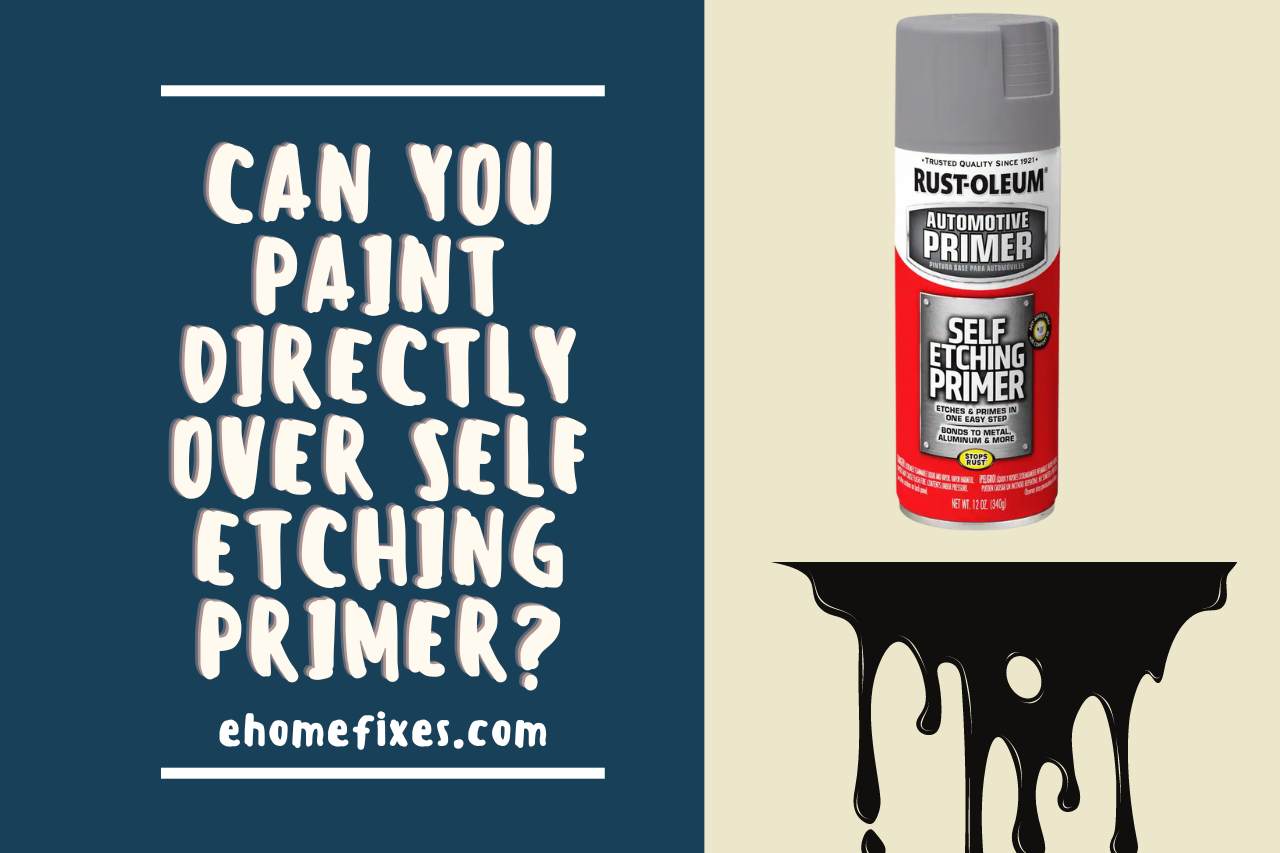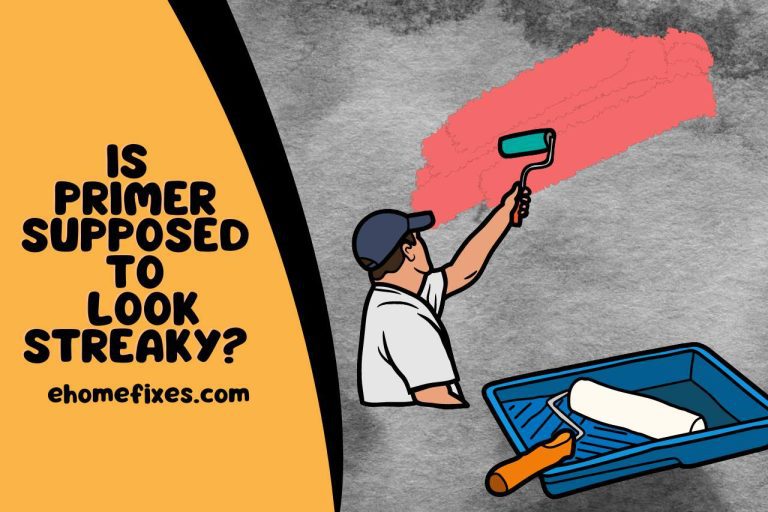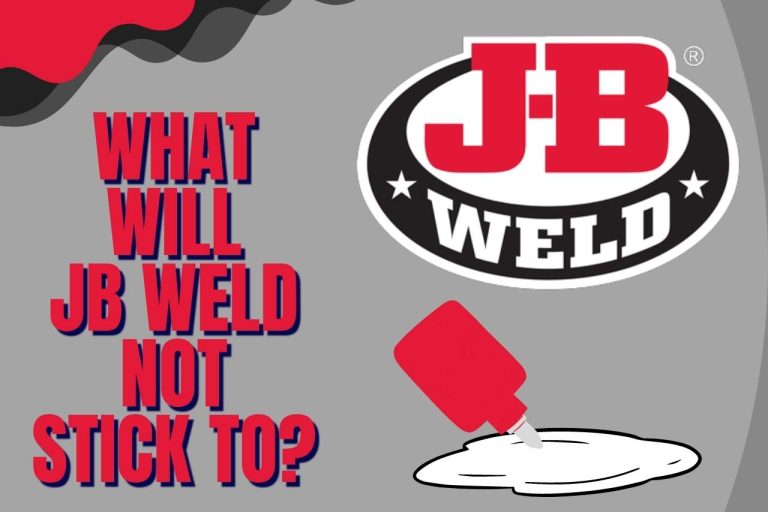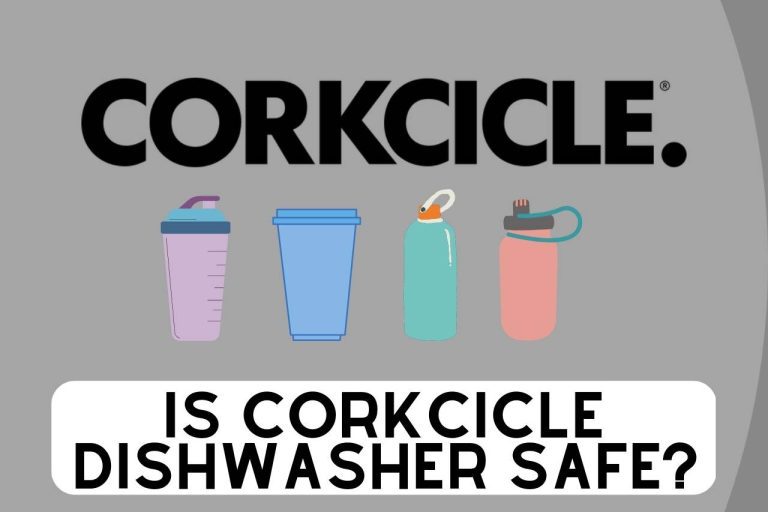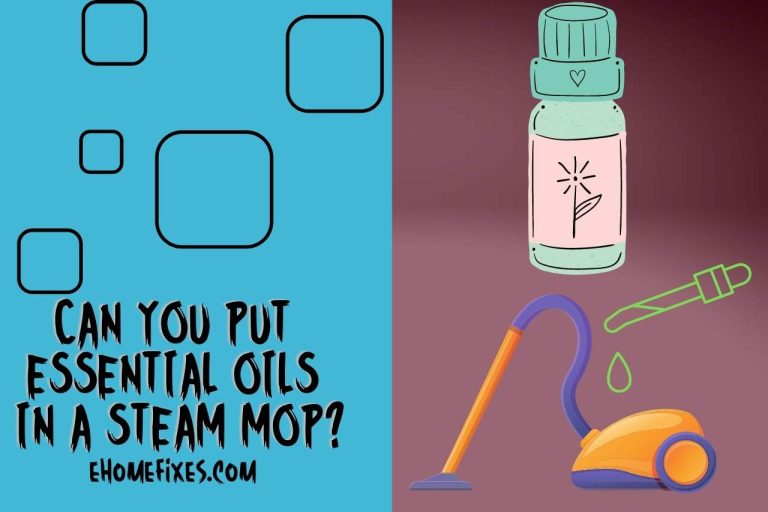Can you Paint Directly Over Self Etching Primer? Read This First!
Yes. You can paint directly over self–etching primer after it has dried. But, to guarantee a good paint job, practice and knowledge of the qualities of the primer are required. Yet, to create a better painting surface, most self-etching primer manufacturers advise adding a layer of normal priming on top. Moreover, sanding/polishing the layer of self-etching primer helps to enhance the bonding of paint.
If you’re restoring a vintage piece of fiberglass or metal, you’ve probably already stripped off the old paint to reveal the original substance. Moreover, self-etching primers are said to protect the metal. Therefore, metals also can be painted directly over a self-etching primer. We will discuss furthermore it based on frequently asked questions about the topic “can you paint directly over self–etching primer?”
What is Self Etching Primer?
A self-etching primer is a rust-prevention coating that primes and etches in one application. Self-Etching Primer has a sophisticated sprayer that enables you to apply paint in any direction, including upright for confined spaces. Repeated spraying causes tiredness, which is reduced by a comfortable spraying tip with a broader pad to place the finger.
This primer is a unique kind of primer made for usage with particular types of materials. This kind of primer etching its way into the work piece’s outermost layer, as the name implies. The primer contains an acid that helps to erode the surface of metals in preparation for painting. The metal’s surface is chemically etched by the acid in the primer, producing a rough surface that enhances the primer and paint’s adhesion.
These primers are designed to be used as primers on both iron-based materials and materials that do not base on iron. Hence the self-etching primers can be used on surfaces like light-weight tubes or thin sheets of metal that cannot be cleaned with a corrosive blast. In the manufacturing sector, self-etching primer is often utilized when traditional priming is ineffective. Typical situations include painting small toys and smaller auto parts, where it is applied to specific plastics to ensure proper paint application.
Can you Paint Directly Over Self Etching Primer?
Yes. You can paint directly over self–etching primer on any surface, once the surface is dried. Self-etching primer is frequently used to stop rust and give a substrate for paint on bare metal surfaces, such as galvanized metal, steel, and aluminum.
Without a primer layer, the primer’s acids will slowly eat away at the paint, causing it to peel and appear uneven even when the paint adheres to it. So, in certain conditions, it is better to paint directly over self-etching primer if the manufacturer permits it. But by adding a conventional priming layer on top, you can keep the acids from interacting with later coats and improve the way the paint adheres.
Zinc and phosphoric acid are found in this primer. The phosphoric acid corrodes the metal after applying a layer of the primer to metal surfaces or fiberglass. The zinc particles break down and create a corrosion-resistant barrier as the liquid flows into it.
There are some facts that can state the outcome will be satisfying when you paint directly over self-etching primer. It doesn’t significantly alter the slick nature of the metal or fiberglass, and you still need a priming coat for the paint to stick. Although using a primer takes some time, the finished product typically has a professional appearance.
Pros and Cons of Painting Over Self Etching Primer
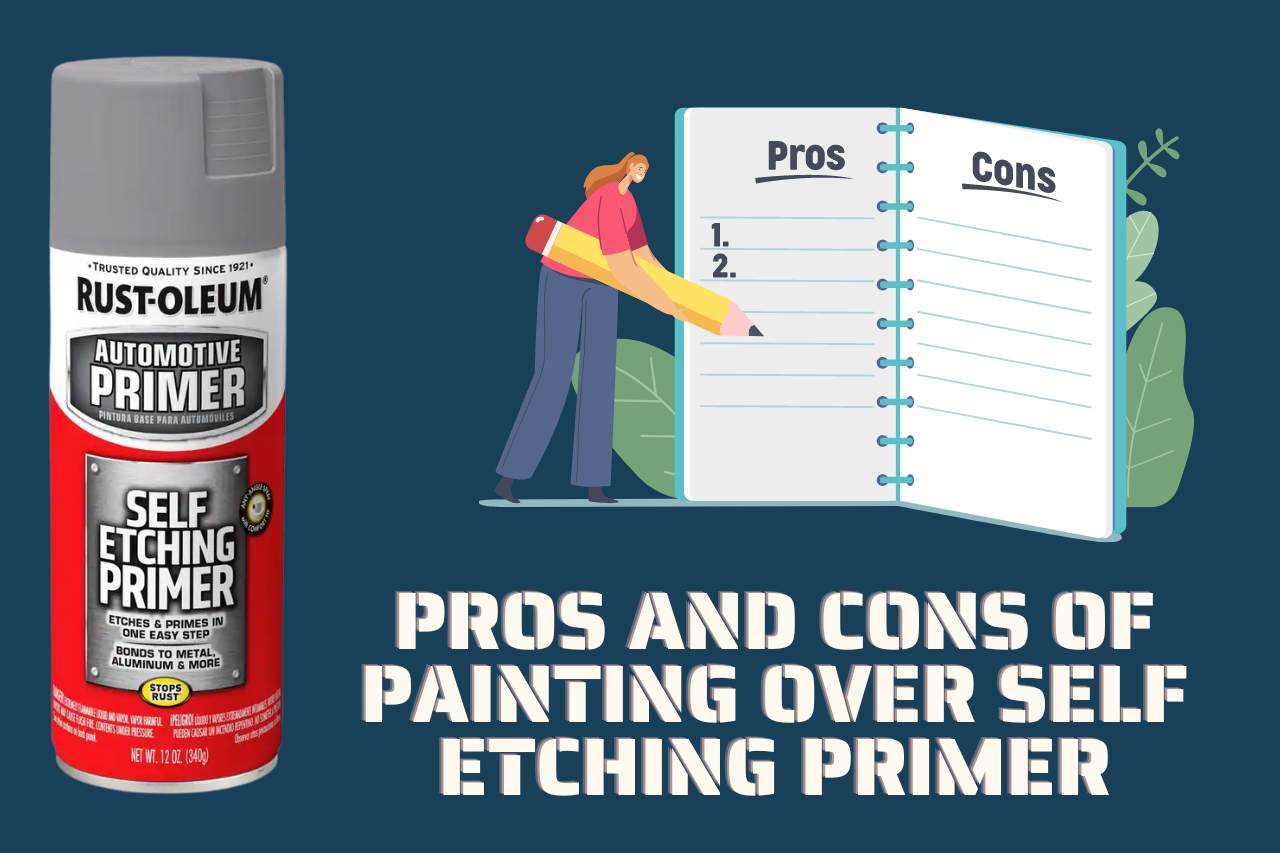
Advantages/Pros of Painting Directly Over Self Etching Primer
Longer-Lasting Finish:
Self-etching primer offers a base coat that is more resilient and resistant to heat, humidity, and other environmental variables, resulting in a base coat with a finish that is more durable and long-lasting when painted over.
Strong and Improved Adhesion:
Painting after applying a self-etching primer ensures stickiness compared to painting on metal surfaces itself because the primer chemically changes the metal surface, creating a stronger bind.
Increased Resistance to Corrosion
The etching chemicals in the primer can boost resistance against rust and other types of corrosion by assisting in the prevention of metallic corrosion.
Paint Drying Time is Reduced
This aids in sealing the surface of the metal and decreases the amount of time paint must cure, which could save time and boost productivity when painted over it.
Versatile
Self-etching primer is a flexible alternative for metal surface preparation because it is suitable for a variety of metal surfaces, including steel, aluminum, and galvanized metal.
Seals Surface
Self-etching primers are excellent in sealing pores, preventing the absorption of paint, and lowering the chance of color fading. They also prevent moisture from penetrating into the metal substrate.
Time and Money Saver
Do not need to sand and do the other preparation methods for the preparation of metallic surfaces compared to the conventional procedures. So, the cost and the time will be saved.
Disadvantages/Cons of Painting Over Self Etching Primer
Difficult Preparation:
Using self-etching primer calls for meticulous surface cleaning, the application of several layers, which can take a lot of time, and the use of specialist tools.
Chemicals with the Potential to Be Harmful
Some of these primers contain strong etching chemicals that, if used improperly, can be dangerous. This could raise the possibility of danger and injury to the environment and the user.
Cost Increase
As this is often more pricey than ordinary priming, painting projects may end up costing more overall.
Best Practices for Painting Over Self Etching Primer
Both the self-etching primer and the paints should be applied according to the instructions of the manufacturer. Using a good paintbrush or roller is the best approach to get a smooth finish. Between paint applications, given enough time for drying. Before using, thoroughly stir the paint.
To prevent drips or an irregular finish, cover the surface evenly and thinly. A rough texture or bubbles can be produced by over-brushing or rolling. For the best outcomes, think about working with a pro. To provide a smooth finish, sand, if needed, in between layers
To properly prepare the surface for painting, the following factors should be considered.
Condition of the Surface
To guarantee appropriate adhesion between the paint and primer, the surface to be coated must be dry, clean, and free of oil, rust, and other impurities.
Paint Compatibility
Choose a paint that works well with the primer since tint of an unsuitable color may not adhere properly, cause discoloration, or cause other problems.
Time to Dry
To guarantee stickiness and an even, smooth finish, allow enough time for drying between the coats of primer and paint.
Tools
If desired, a sprayer and premium brushes or rollers can aid in achieving an even, smooth application of the two substances (primer and the paint)
Expertise
If you need to gain more knowledge about painting over self-etching primer to get the best results, think about hiring a qualified or experienced painter.
Look at this Video
Video Credits – Ask About Movies
Continue Exploring: More Articles to Keep You Engaged

